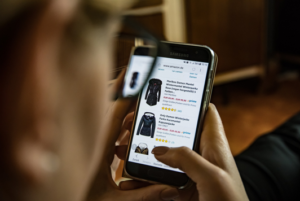
The future of retail is clearly online, and this is where cybercrime groups are turning their attention and focusing their wicked efforts. In many cases, e-commerce entrepreneurs tend to put too much trust in the online retail platforms they use, and this is something that hackers and unethical players are known to take advantage of.
A recent report published by an online payment security firm indicates that more than 215,000 e-commerce shops that use the popular Magento platform have not installed critical security patches. This is a problem because sophisticated hackers will often scan for vulnerabilities based on the absence of security patches.
Solid security in terms of customer data and payment transactions are two major reasons e-commerce entrepreneurs choose to sell their products on the third-party Amazon Marketplace; however, other kinds of security threats await them in this dominant platform.
While independent sellers should feel safer on Amazon than if they were operating their own Magento e-commerce website with various shopping cart and checkout plug-ins, they still have to deal with ASIN hijackers, dropshippers, unauthorized sellers, counterfeiters, and other rogue retailers.
The ASIN Hijacking Threat

Virtually all independent sellers on Amazon are at risk of having their product listings hijacked. While counterfeiters and dropshippers are more likely to make headlines, the bottom line is that the heart of the problem is always the hijacking of Amazon Standard Identification Numbers.
ASIN hijacking is the biggest headache that Amazon has faced since it opened its online marketplace to third-party sellers nearly two decades ago, and this situation is not likely to go away anytime soon. The way the third-party Amazon Marketplace works makes it nearly impossible to completely protect e-commerce products by doing away with ASIN hijacking.
How ASIN Hijacking Works
Let’s say you are a manufacturer of rugged smartphone cases; when you introduce your product to the Amazon Marketplace, you will create a new and unique ASIN tied to your Universal Product Code, which was assigned to you as the brand owner. Unless you are able to register your product under the Amazon Brand Gating program, which is mostly reserved for major brands, your ASIN will be wide open for others to list and edit.
You may feel safe about your ASINs being left alone since you control distribution; sadly, this is seldom the case. As soon as your sales start picking up and shoppers start leaving positive reviews, scammers will come out of the woodwork to hijack your product listings.
In some cases, the ASIN hijackers will be counterfeiters; in other cases, they will be scammers who will not even ship a replacement product. Unfortunately, you will be left holding the bag and dealing with lost sales and upset shoppers.
How You Can Prevent ASIN Hijacking
The first sign of ASIN hijacking appears when a third-party seller starts listing your products without your approval. Once this happens, the hijackers will use various black hat tactics to lock you out of your ASINs.
When unauthorized sellers piggyback on your ASINs, you can deal with them directly or report them to Amazon Seller Support. If the hijackers are counterfeiters, the Amazon legal department will need to get involved in order to further protect e-commerce products on the marketplace.
The Best Protection Against ASIN Hijacking
If you have created 10 or more unique ASINs, your best protection against hijackers is Brandlox, an online subscription solution that maintains constant vigilance over your Amazon products. Brandlox notifies you the moment an unauthorized sellers lists your ASINs without permission. Furthermore, this solution provides tools such as cease-and-desist legal notices, digital trails and test purchases to let you deal with rogue sellers.
Contact a Brandlox representative today to learn more about handling e-commerce security threats on the Amazon Marketplace or call us at (866)848-6072

